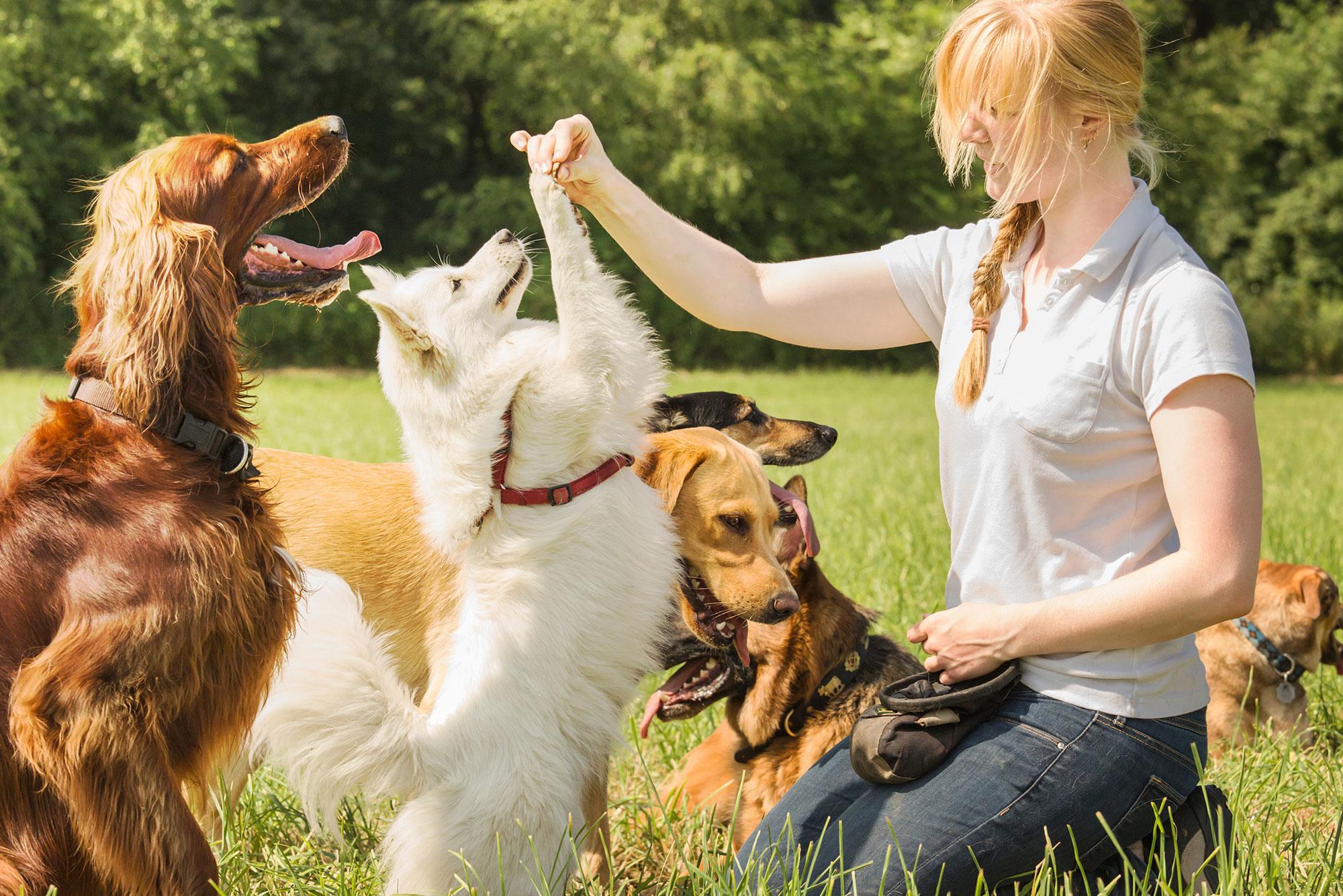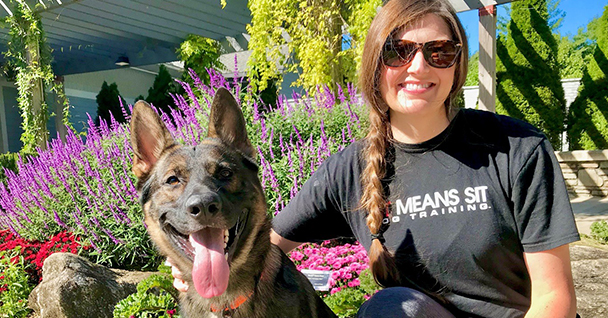The Ultimate Guide to Favorable Reinforcement in Dog Training
The Ultimate Guide to Favorable Reinforcement in Dog Training
Blog Article
Vital Tips for Successful Dog Training: A Guide for Pet Owners
Efficient dog training is a complex process that needs a strategic strategy tailored to both the pet dog's personality and the owner's goals. Understanding how to navigate these barriers can substantially enhance the training experience, ultimately changing the relationship between proprietor and pet dog.
Recognizing Canine Actions
Comprehending pet actions is important for effective training and fostering a harmonious partnership between dogs and their proprietors. dog training. Pets interact mainly with body language, vocalizations, and actions, making it important for proprietors to interpret these signals precisely.

Socializing plays a substantial function in dog habits; direct exposure to different environments, individuals, and various other animals can dramatically impact a dog's character. Additionally, factors such as type features and specific personality ought to direct training approaches, as some breeds might have details behavioral attributes that necessitate tailored strategies. By comprehending these elements, proprietors can create a helpful environment that motivates favorable habits, causing successful training results and a much deeper bond with their animals.
Developing Regular Commands
Efficient communication with your dog starts with establishing regular commands. This fundamental element of training is essential for promoting understanding in between you and your pet dog. Uniformity in the commands you utilize makes certain that your dog can dependably link certain words or phrases with the desired actions.
When picking commands, choose clear, unique words that are simple to claim and distinguish from one another. Avoid making use of similar-sounding commands that may puzzle your pet dog. Making use of "sit" and "stay" is ideal, but "rest" and "struck" might lead to misconceptions.
In addition, keep the same tone and quantity for each command. Dogs are sensitive to singing signs, so differing your tone can create complication.
It is similarly crucial to guarantee that all family members are on the same web page relating to the commands made use of. A united front in command usage will certainly avoid combined signals and strengthen the learning process.
Favorable Reinforcement Strategies
The power of positive support in pet dog training depends on its ability to motivate wanted actions with rewards and praise. This technique is based in the concept that actions complied with by favorable end results are most likely to be repeated. By including positive support into your training routine, you can properly shape your pet's habits in a positive fashion.
To implement favorable support, it's vital to determine what encourages your dog, whether it be deals with, toys, or verbal appreciation. When your pet executes a preferred activity, such as sitting on command, immediately compensate them with a treat or love. This association between the command and the favorable outcome enhances their understanding.
It's vital to timing the rewards properly; delivering the reinforcement within secs of the preferred actions helps your canine make the link (dog training). In addition, uniformity is key-- make sure that all relative utilize the very same commands and reward systems to prevent complication

Progressively, you can decrease the regularity of deals with as your pet learns the habits, transitioning to commend or intermittent rewards. This technique not just cultivates a solid bond in between you and your canine however likewise advertises a favorable understanding setting, making educating a pleasurable experience for both.
Socialization and Communication
Regularly exposing your canine to a variety of atmospheres, people, and various other animals is important for their social development. Socializing ought to begin early, ideally throughout the important home window of 3 to 14 weeks, when pups try here are most receptive to new experiences. However, older pets can likewise profit from ongoing socialization efforts.
Introduce your pet to different setups, such as parks, pet-friendly shops, and metropolitan areas. This exposure helps them adapt to different stimuli, reducing stress and anxiety and fear actions. Urge positive interactions with other canines and people, ensuring that these experiences are secure and controlled to cultivate confidence.
Make use of organized playdates with genteel canines, as this can boost your pet's social skills and educate them proper habits. Obedience courses and training sessions likewise give exceptional opportunities for socializing, enabling your dog to engage with others in a supervised atmosphere.
Display your pet dog's body movement throughout interactions, as this will certainly help you assess their comfort level. Slowly increase exposure to even more tough circumstances while guaranteeing that each experience is favorable. A well-socialized dog is a lot more most likely to exhibit well balanced actions, making them a happiness to have in any setting.
Resolving Common Training Challenges
Every pet owner will come across training obstacles at some point, regardless of their dog's age or socialization level. Determining usual concerns such as stubbornness, interruptions, and fearfulness can aid in creating reliable techniques for enhancement.

Distractions during training sessions can derail focus. To combat this, start training in a peaceful atmosphere with very little stimuli. Slowly introduce interruptions as the pet comes to be extra competent in commands. Short, regular training sessions are also effective more tips here in maintaining attention.
Terror can impede a pet's understanding procedure. Progressive desensitization to the source of anxiety, combined with favorable support, can assist minimize anxiety. Patience is crucial; never ever require a dog right into a circumstance that causes distress, as this might worsen the problem.
Eventually, understanding and addressing these typical challenges with an organized technique will certainly promote an extra efficient training experience, strengthening the bond in between canine and proprietor while advertising effective understanding.
Final Thought
In recap, effective dog training depends on an extensive understanding of canine behavior, the establishment of regular commands, and the application of positive support techniques. Socializing plays a vital role in creating well-adjusted pets, while resolving common training difficulties requires persistence and adaptability. By carrying out these important approaches, pet dog owners can cultivate a strong bond with their pet dogs and advertise desirable habits, inevitably causing an unified relationship between human beings and their canine friends.
Understanding canine behavior is necessary for efficient training and promoting a harmonious connection between dogs and their owners.Socialization plays a significant duty in pet dog actions; direct exposure to numerous atmospheres, individuals, and various other pets can significantly affect a pet's temperament.The power of positive reinforcement in canine training exists in its ability to motivate preferred actions anchor via benefits and appreciation. By including favorable reinforcement right into your training regimen, you can effectively form your pet's actions in a positive manner.
In summary, successful pet dog training depends on a comprehensive understanding of canine behavior, the establishment of consistent commands, and the application of positive reinforcement techniques.
Report this page